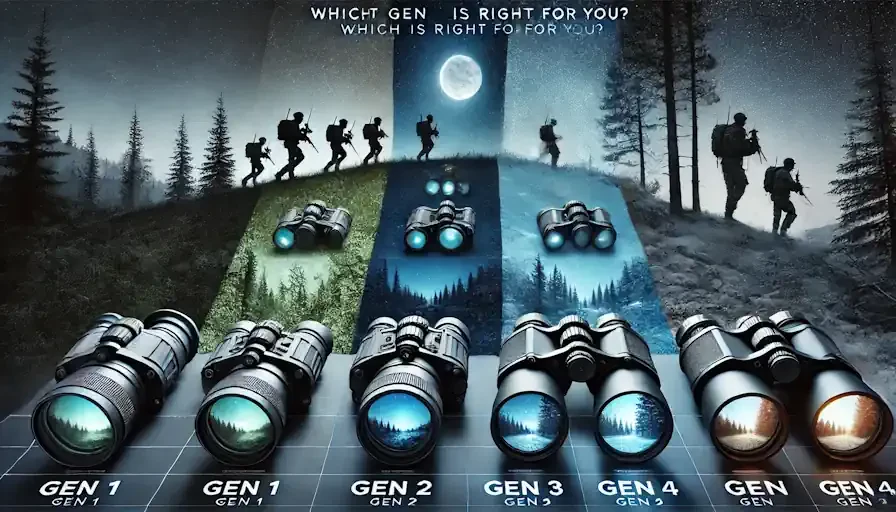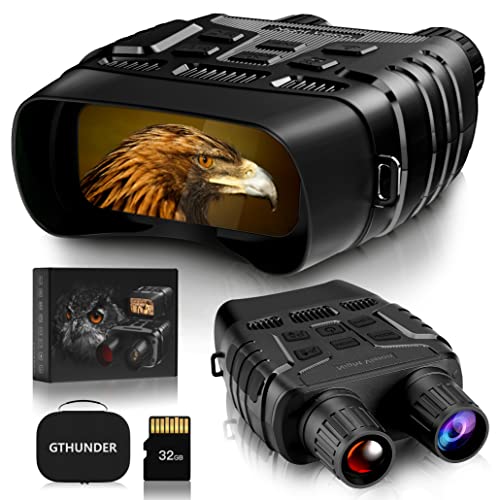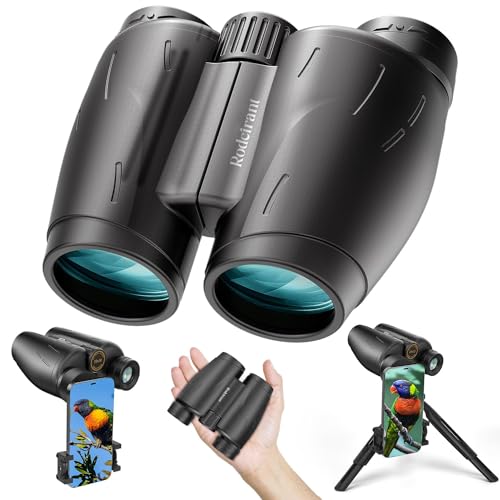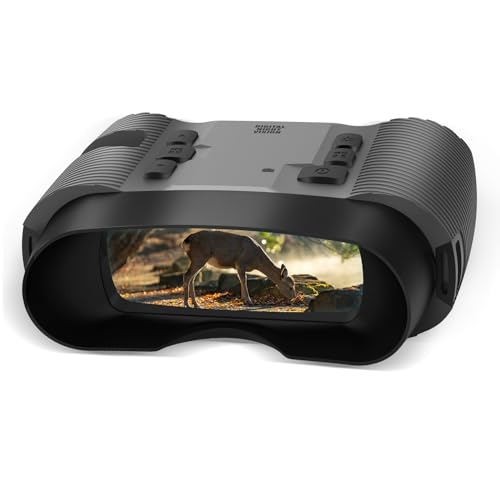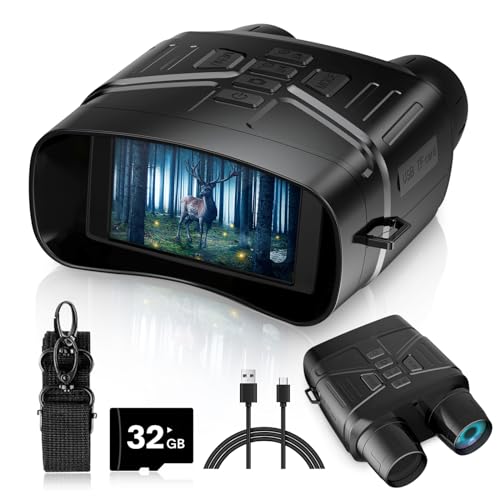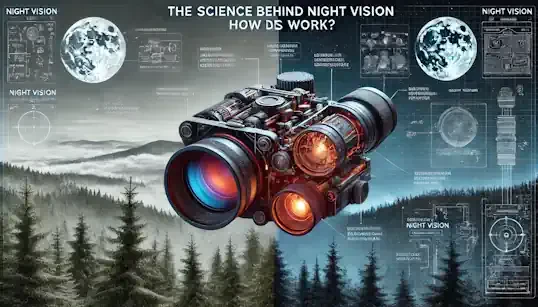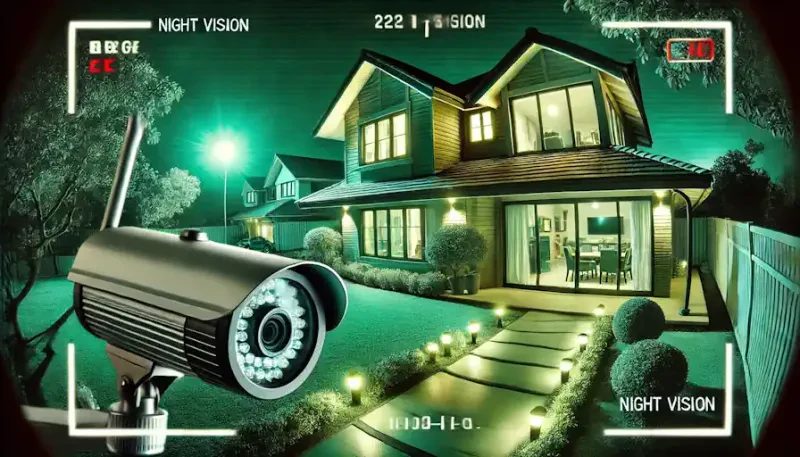You're standing in front of a wall of night vision devices, each boasting a different "Gen" number. The price tags vary wildly, and you're left wondering what those "Gen" labels actually mean. Is a "Gen 3" device really worth the significant price jump compared to a "Gen 1"? This confusion is incredibly common, and it's precisely why understanding night vision generations is crucial. The term "generation" in night vision technology signifies significant leaps in performance, capability, and, of course, cost. This article aims to demystify these generations, explaining the key differences between them in clear, understandable terms. We'll delve into the specifics of Gen 1, Gen 2, and Gen 3 night vision, and even touch upon later advancements and digital alternatives. Our goal is to equip you with the knowledge to confidently choose the right night vision generation for your specific needs and budget. We will briefly cover what sets each apart.
Before we dive into the specifics of each generation, it's helpful to have a basic understanding of how image intensification, the core technology behind most night vision devices, works. Think of it as a sophisticated process of amplifying faint, existing light. Even on a seemingly dark night, there's always some light available – starlight, moonlight, or even the faint glow of distant city lights.
This faint light enters the night vision device through an objective lens. The light, composed of photons, then strikes a specialized surface called the photocathode. The photocathode's job is to convert the energy of these incoming photons into electrons. These electrons then move towards the core of the intensification process.
In most modern night vision devices (Gen 2 and above), the electrons encounter a crucial component called the Microchannel Plate (MCP). The MCP is a thin disc containing millions of tiny, microscopic channels. When an electron enters one of these channels, it collides with the channel wall, causing the release of more electrons. This cascading effect repeats itself many times, dramatically amplifying the original signal – a single electron can be multiplied into thousands.
Finally, these amplified electrons strike a phosphor screen. Phosphors are materials that emit light when struck by electrons. The phosphor screen glows, creating a visible image that corresponds to the original scene, but now vastly brighter. The user views this intensified image through an eyepiece.
Each generation of night vision builds upon this fundamental process, improving specific components and technologies to enhance performance in various ways. The generation number essentially reflects the level of sophistication and effectiveness of these improvements.
Generation 1 night vision represents the earliest and most basic form of this technology. It's the entry point into the world of night vision, and consequently, the most affordable option. Gen 1 devices use a basic photocathode, typically an S-20 or similar type, to convert incoming light into electrons. However, a key characteristic of Gen 1 is the absence of a Microchannel Plate (MCP). The electron amplification is achieved through a simpler process, which is significantly less effective than the MCP used in later generations.
Because of this simpler amplification process, Gen 1 devices have lower sensitivity to light. They require more ambient light to produce a usable image. In very dark conditions, their performance is limited. The effective range of Gen 1 devices is also relatively short, typically under 100 yards. You'll likely notice some image distortion, particularly around the edges of the image, often described as a "fish-eye" effect. The image resolution is also lower compared to later generations, resulting in a less detailed picture. The lifespan of Gen 1 devices is generally shorter than that of higher generations.
The main advantage of Gen 1 is its affordability. It's the most budget-friendly option, making it accessible to those who are new to night vision or have very basic needs. It can be suitable for casual, short-range observation, such as viewing wildlife in your backyard or navigating in a dimly lit environment.
However, the limitations are significant. Gen 1 struggles in very low-light conditions, and the image quality issues can be noticeable. If you need reliable night vision for more demanding applications, you'll likely want to consider a higher generation. Gen 1 is best for budget-conscious users who need only basic night vision capabilities for short-range use and are willing to accept the limitations in image quality and range.
Generation 2 night vision represents a substantial leap forward in performance compared to Gen 1. The defining feature of Gen 2 is the introduction of the Microchannel Plate (MCP). As we discussed earlier, the MCP dramatically amplifies the electron signal, resulting in a much brighter and clearer image. Gen 2 devices also typically utilize an improved photocathode compared to Gen 1, further enhancing their light sensitivity.
The inclusion of the MCP makes a significant difference in several key performance areas. Gen 2 devices are noticeably more sensitive to light, allowing them to operate effectively in much lower light conditions than Gen 1. Their effective range is also extended, often reaching up to 200 yards or even more, depending on the specific device and environmental conditions. Image distortion is significantly reduced, and the overall image clarity is much better. You'll see a sharper, more detailed image with less of the "fish-eye" effect that's common in Gen 1. The lifespan of Gen 2 devices is also generally longer than that of Gen 1.
The advantages of Gen 2 are clear: a much better balance of price and performance. While more expensive than Gen 1, Gen 2 offers a significantly improved viewing experience and is suitable for a wider range of applications. The clearer, brighter image and longer range make it a viable option for activities like hunting (where legal and ethical, of course), security surveillance, and general-purpose night observation.
The main disadvantage is the increased cost compared to Gen 1. While Gen 2 offers a significant improvement, it still doesn't reach the performance levels of Gen 3, particularly in extremely low-light situations. Gen 2 is a great choice for users who need more than basic night vision but don't require the absolute best performance or have a very high budget. It's a solid mid-range option that satisfies the needs of many enthusiasts and professionals.
Generation 3 night vision currently represents the gold standard for many professional applications, including military and law enforcement. It builds upon the advancements of Gen 2, taking performance to the highest level currently achievable with image intensifier tube technology. The key differentiating factor in Gen 3 is the use of a gallium arsenide (GaAs) photocathode. This material is significantly more sensitive to light than the photocathodes used in previous generations.
In addition to the improved photocathode, Gen 3 devices often incorporate an ion barrier film on the MCP. This film serves two primary purposes: it extends the lifespan of the MCP by protecting it from damage, and it further reduces image noise, resulting in an even clearer picture.
The combined effect of the GaAs photocathode and the improved MCP is exceptional performance. Gen 3 devices excel in extremely low-light conditions, providing a bright, sharp, and clear image where other generations would struggle. They offer the longest range, often exceeding 300 yards, and the image quality is the best available in tube-based night vision. Gen 3 devices also typically exhibit minimal "blooming" or "halo" effects around bright light sources, maintaining image clarity even in challenging lighting situations. They also offer a substantial advantage in lifespan compared to prior generations.
The advantages of Gen 3 are undeniable: superior performance in all aspects. The image quality is unmatched, the range is exceptional, and the sensitivity to low light is unparalleled. This makes Gen 3 ideal for demanding applications where performance is paramount, such as military operations, law enforcement surveillance, and professional-grade security.
The primary disadvantage, and it's a significant one, is the cost. Gen 3 devices are the most expensive of the traditional night vision generations. The advanced technology and manufacturing processes involved contribute to the higher price tag. Gen 3 is best for users who demand the absolute best possible night vision performance and are willing to pay a premium for it. It's the choice for professionals and serious enthusiasts who need the highest level of capability.
While Gen 3 is widely considered the pinnacle of tube-based night vision, there are further advancements that are sometimes referred to as "Gen 3+" or "Gen 4." It's important to note that these terms are not as rigidly defined as the core Gen 1, Gen 2, and Gen 3 classifications. They often represent incremental improvements over Gen 3, such as even higher resolution, further enhanced sensitivity, or reduced halo effects. These advancements continue to push the boundaries of night vision technology, but the performance gains are often less dramatic than the jumps between the main generations.
A significant development in recent years is the rise of digital night vision. Unlike traditional tube-based night vision, which relies on image intensifier tubes, digital night vision uses a CMOS sensor, similar to those found in digital cameras, to capture light. The signal from the sensor is then processed digitally and displayed on a small LCD screen within the device.
Digital night vision offers several advantages. One of the most significant is the ability to record images and videos. Many digital night vision devices have built-in recording capabilities, allowing you to capture your observations. They also often offer adjustable settings, such as brightness and contrast control, and some even incorporate features like digital zoom and image stabilization. Digital night vision devices can also be less susceptible to damage from bright light sources, which can be a concern with traditional image intensifier tubes.
However, digital night vision also has some drawbacks, particularly when compared to high-end tube-based night vision (Gen 3). While digital technology is constantly improving, it often still lags behind Gen 3 in terms of performance in extremely low-light conditions. The image quality, while often good, may not be as sharp or detailed as a high-quality Gen 3 device in the darkest environments.
The choice between tube based generations and digital depends greatly on the priorities. Tube based technology offers a raw, brighter image in extremely low light. Digital offers added capabilities such as recording.
So, how do you choose the right generation for your needs? The decision hinges on a careful assessment of your intended use, your typical operating environment, and, of course, your budget.
First, consider what you'll primarily be using the night vision for. Are you a casual user who just wants to observe wildlife in your backyard? Are you a hunter who needs reliable night vision for tracking game in low-light conditions? Are you a security professional who requires the best possible performance for surveillance and threat detection? The more demanding your application, the higher the generation you'll likely need.
Next, think about your typical lighting conditions. Will you be using the night vision in areas with some ambient light, such as moonlight or starlight? Or will you be operating in complete darkness? If you frequently encounter extremely low-light situations, a higher generation (Gen 3 or digital with good low-light performance) will be essential.
Consider your required range. How far away do you need to be able to see clearly? If you need to observe objects at long distances, a higher generation with better resolution and range will be necessary.
Finally, be realistic about your budget. Night vision devices span a wide price range, and the generation is a major factor in determining cost. Gen 1 is the most affordable, Gen 2 offers a good balance of price and performance, and Gen 3 is the most expensive but provides the best performance.
To simplify the decision-making process, let's create a summarizing table.
| Generation | Best Use Cases | Pros | Cons | Price Range |
|---|---|---|---|---|
| Gen 1 | Casual observation, short-range use, backyard viewing | Most affordable, entry-level option. | Limited performance in very low light, image distortion, shorter range, lower resolution. | $100 - $500 |
| Gen 2 | General-purpose use, hunting (where legal), security, intermediate observation | Good balance of price and performance, clearer image than Gen 1, longer range. | More expensive than Gen 1, not as powerful as Gen 3. | $500 - $2500 |
| Gen 3 | Military, law enforcement, professional applications, demanding low-light use | Superior performance, best image quality, longest range, excels in extremely low light. | Most expensive. | $2500+ |
| Digital Night Vision | General observation, Security, those wanting recording features | Recording capabilities, adjustable settings, potential for lower cost, less prone to bright light damage. | May have lower performance in extremely low light compared to high-end tube based NV. | $300 - Varies greatly |
Understanding night vision generations is essential for making an informed purchase. There's no single "best" generation; the ideal choice depends entirely on your individual needs and budget. By carefully considering your intended use, your typical operating environment, and the performance characteristics of each generation, you can confidently select the night vision device that's perfectly suited to your requirements. With this knowledge, you can navigate the sometimes-confusing world of night vision and unlock the ability to see in the dark, opening up a whole new realm of possibilities for observation, exploration, and security.
